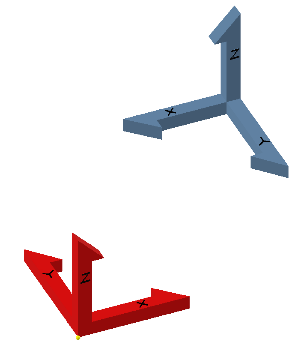
Constrain To Component
Overview
Constrain To Component constrains selected components to a base component while maintaining their current position and orientation. Each component's origin planes are constrained to the base component's origin planes. If all three planes are not parallel, no action is taken. This is useful for assemblies where components need to be constrained but retain their position and orientation.
How It Works
- Select the base component and one or more components to constrain.
- The command applies constraints so each selected component's origin planes match the base component's origin planes, maintaining position and orientation.
- If the planes are not parallel, the command does nothing.
Usage Instructions
- Open the assembly containing the components.
- Select the base component and the components to constrain.
- Click the Constrain To Component button in the Configure panel.
- Review the constraints in the assembly.
Troubleshooting
- If components are not constrained as expected, verify that their origin planes are parallel to the base component.
- Check for existing constraints that may interfere with the operation.
- Ensure the correct base component is selected.
Examples
- Constrain a bracket to a base plate: Select both components and use the command to constrain the bracket while keeping its position and orientation.
- Constrain multiple supports to a common origin: Select the base and all supports, then run the command to constrain them.

